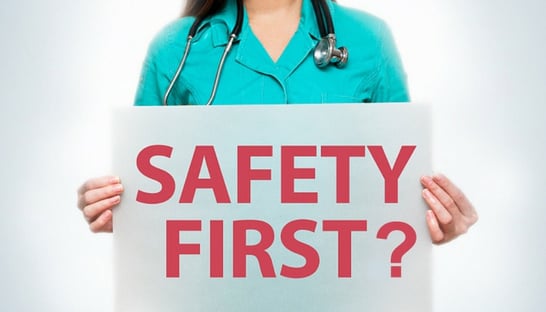 As a Nurse, you consider many factors when choosing where you want to work. Safety should be at the top of your list of considerations.
As a Nurse, you consider many factors when choosing where you want to work. Safety should be at the top of your list of considerations.
For more than 20 years, The Leapfrog Group has collected, analyzed, and published hospital data on safety and quality.
Leapfrog assigns Hospital Safety Grades to nearly 3,000 general acute-care Hospitals across the nation twice annually.
Here is the most recent list of safest States and Hospitals to work at according to Leapfrog.
- New Hampshire
Dartmouth-Hitchcock Medical Center - Virginia
Augusta Health - Utah
Intermountain Alta View Hospital - Colorado
Centura Health Castle Rock Adventist Hospital - Idaho
Eastern Idaho Regional Medical Center - New Jersey
Bergen New Bridge Medical Center - North Carolina
AdventHealth Hendersonville - Maine
Abbott Northwestern Hospital - Pennsylvania
AHN Grove City - Florida
AdventHealth Altamonte Springs - Oregon
Asante Ashland Community Hospital - Washington
Cascade Valley Hospital - Massachusetts
Baystate Noble Hospital - Texas
Ascension Providence - Tennessee
Baptist Memorial Hospital - Hawaii
The Queen's Medical Center - Rhode Island
South County Hospital - Minnesota
Abbott Northwestern Hospital - Michigan
Ascension St Joseph Hospital - Montana
Billings Clinic - South Carolina
Beaufort Memorial Hospital - Louisiana
Ochsner Medical Center - Mississippi
Baptist Memorial Hospital Golden Triangle - Kansas
AdventHealth Shawnee Mission - California
Hoag Memorial Hospital Presbyterian - Ohio
Cleveland Clinic Avon Hospital - Indiana
Hancock Regional Hospital - Illinois
FHN Memorial Hospital - Nevada
Desert Springs Hospital Medical Center - Georgia
AdventHealth Redmond
- Arkansas
Baptist Health Medical Center - Connecticut
Greenwich Hospital - Oklahoma
Mercy Hospital Ardmore - Missouri
Centerpoint Medical Center - Maryland
Anne Arundel Medical Center - Kentucky
Baptist Health - Alaska
Mat-Su Regional Medical Center - Delaware
Bayhealth Hospital Sussex Campus - Alabama
South Baldwin Regional Medical Center - New York
Catholic Health System – Kenmore Mercy Hospital - Wisconsin
Bellin Memorial Hospital - Wyoming
Ivinson Memorial Hospital - Arizona
Mayo Clinic Hospital - New Mexico
CHRISTUS St. Vincent Regional Medical Center - South Dakota
Sanford USD Medical Center - Nebraska
Kearney Regional Medical Center - West Virginia
Greenbrier Valley Medical Center
- Iowa
Lakes Regional Healthcare - Vermont
Central Vermont Medical Center - Washignton D.C.
George Washington University Hospital - North Dakota
Sanford Medical Center


 Nurses are a constant presence at the bedside and regularly interact with physicians, pharmacists, families, and all other members of the health care team but, physicians may spend only 30 to 45 minutes a day with even a critically ill hospitalized patient. This means Nurses have the critical role in ensuring a patient's safety.
Nurses are a constant presence at the bedside and regularly interact with physicians, pharmacists, families, and all other members of the health care team but, physicians may spend only 30 to 45 minutes a day with even a critically ill hospitalized patient. This means Nurses have the critical role in ensuring a patient's safety.
